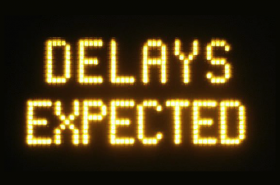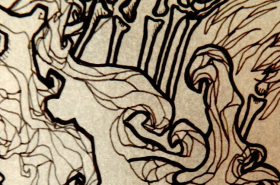It’s no secret that writers loathe the editing process. With its tedious attention to grammar rules you tried to forget as soon as you graduated, repetitive methodologies that make anyone’s brain numb, and general snail’s pace, it’s no surprise that it pales in comparison to the joy of creating. But it’s a necessary evil. One that a strange few of us actually enjoy and decided to make a profession, creating the editor/writer bond we know so well. That doesn’t exonerate you from having to edit, though.
Surprisingly, I’ve actually seen the statement (more than once) that writers don’t need to worry about things like grammar and spelling. That’s the editor’s job; they’ll clean it up. (Every time someone says this, another editing muse disintegrates into ash from the horror.) No, actually, that’s not our job. It’s yours. Yes, editors (especially freelance editors) are more forgiving of the occasional typo and drunk-sounding sentence than your average reader, but that doesn’t mean they want to sludge through something that isn’t even as legible as your 4th grade history paper. And if your 4th grade teacher made you proofread, what makes you think an editor standing between you and publication, between you and being paid for your work, wouldn’t expect the same thing?
Exactly. They do.
But that doesn’t mean editing has to be as painful as a self-lobotomy. In fact, I’ve given tips to get you through the revision process before. (Divorce Your Words; Save Your Story) It’s a topic that bears repeating though, so today, I’m going to give you another set of helpful insights, not from the perspective of a writer (like that previous post was) but from that of an editor. (Hold on a moment while I swap my writer hat for my editor one . . . Okay. Ready.)
1. Step Back
No, I’m not bastardizing “step off” so don’t get your panties in a bunch. Step back is a concept from the art world. In fact, it’s one of the first things you learn at art school. (Yes, you learn stuff at art school. Shocking, I know.) The idea is that an artist can’t clearly see the entirety of their work when they’re hunched over it and it’s about 6 inches from their face, so they have to “step back” to change their perspective and see their work the way the world does. Now it makes sense, huh?
The first step in self-editing is finding a way to create that shift in perspective, to see the work you’ve poured your heart into for the past year in a different way. We’re too close to it during the creation phase, viewing it like an overprotective mother turning a blind eye to their kid’s flaws. You have to break that connection before you can even begin to analyze your work objectively. You need to step back.
The easiest way to do that is simply to shove your manuscript in a drawer for a few days and avoid it like a note from a debt collector trying to repo your car. I recommend a bare minimum of 48 hours, but a week to a month would be better. That allows the warm, fuzzy glow of creation to fade away and stark reality to set in. If you can’t afford to take the time off, then simply changing the mode of viewing can help. Download it onto an eReader or print it out. Even just move to the Starbucks two blocks away instead of the one next to your house. The change of venue will automatically clear your perspective of any lingering rosy tint and allow you to see more clearly.
2. Ignore the Details
Editing is synonymous with comma hunting, spell-check, and word choice, right? Wrong. So many writers (and more than a few editors) dive right into the detail work, thinking all they have to do is clean up the grammar, completely skipping over a very crucial step — structural editing. Bypassing this is like trying to repair a broken bone with makeup. All you end up with is a mangled limb painted like a hooker. Offensive, maybe, but it gets the point across, no?
At this stage in the process, no one cares if you spelled “definitely” wrong, or have a bazillion commas in all the wrong places. Ignore all that. Look deeper, at the story itself. If the structure isn’t working, there’s no point in polishing. That lump of coal’s not turning into a diamond. The only way to fix it is to become a story surgeon, diagnosing and repairing things that are otherwise fatal to your chances of publication. How? Like this:
Take that fresh perspective you earned in step 1 and read through your manuscript from an aerial view, glossing over all the details. You’ll fix them later. Right now, you want to focus on things like pacing, character motivations, world development, scene transitions and narrative sequence. What’s the message of your book? Is that coming through clearly? Do the characters feel like fully-fleshed out people, or cardboard cut-outs? Are the scenes in the right order or does shuffling a few around improve the plot’s progression? These are the kinds of questions you should be asking. Trust your instincts as a reader. We’ve all been programmed to know when a story works and when it doesn’t. And don’t be afraid to make a giant mess; you can stitch it all back together afterward.
3. Murder Your Habit Words
Habit words are insidious, riddling your manuscript like a cancer, so before you send your book off to the cosmetic surgeon (aka, your editor) for that much-needed facelift, you need to eradicate them. (Don’t ask why my favorite analogy for editing is medical. I don’t know.) Don’t feel bad, everyone has them. They’re like comfort food, something we turn to without even realizing. My habit words are “was” and “so.” I’m sure I have others, but that’s all I’m admitting to. 😉
Other common ones are “that,” “had,” and “actually.” It can also be a phrase like “for a moment” or “roll his/her/their eyes.” Pretty much anything you find repeating over and over again qualifies as a habit word. Ideally, you should try to avoid repeating words on the same page or even the same chapter! The English vocabulary is huge; use it to your advantage. But without being pretentious about it. Rarely will you find a word that doesn’t have at least one synonym. So before you go to the next step, arm that delete button with a hefty dose of radiation and go hunting for your habit words. You can’t kill them all, but you’ll be surprised at how even just this small tweak can drastically improve the smoothness of your prose.
4. Rhythm’s in the Details
Now you get to go through your manuscript with a fine-toothed comb, copyediting line by line until it’s as perfect as you can make it on your own. This includes things like fixing rocky sentences, condensing wordy parts, simplifying convoluted phrasing, fixing grammar mistakes and just general tweaking for rhythm and smoothness. This is what people picture when they hear “editing.” It’s the tedious part that will make you want to poke your own eyes out just so you never have to read that chapter ever again. It’s repetitive and monotonous, but it’s like sending your book to the gym. Each pass will trim a little more of the fat until your manuscript is a lean, efficient piece of storytelling. At which point you send it to an editor and the whole process starts over.
That’s right. I just outlined what a professional editor does. (With the exception of #1.)
So, why, if these are all steps you can do yourself, do editors exist? Because they provide objectivity. Even a self-editing master won’t be able to catch everything. Writers can never truly disconnect from their work, can never view it with complete objectivity, because they know the story and what they were trying to convey. An editor provides clarity, finding things that are confusing or missing just like a reader would. But since they’re also literary doctors, they’ll help you fix it, saving you from the embarrassing backlash of reader criticism and scorn. Besides, two heads are better than one. Right?
**Syndicated from Nightwolf’s Corner, the personal blog of Senior Editor, Kisa Whipkey.**




djinnia
so awesome and so true. i’m horrible at editing my own stuff, but i can be a beast for other people. sigh.